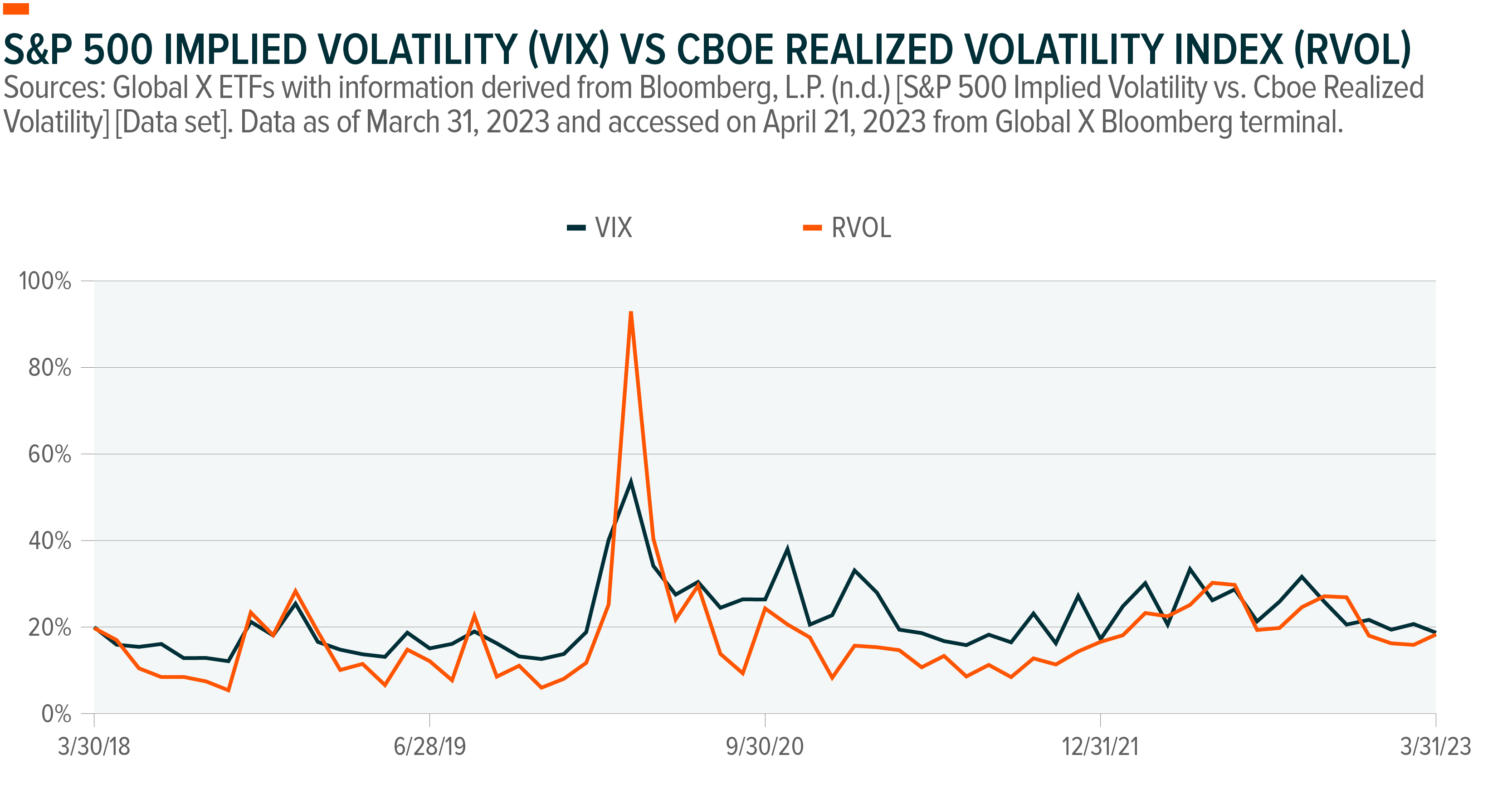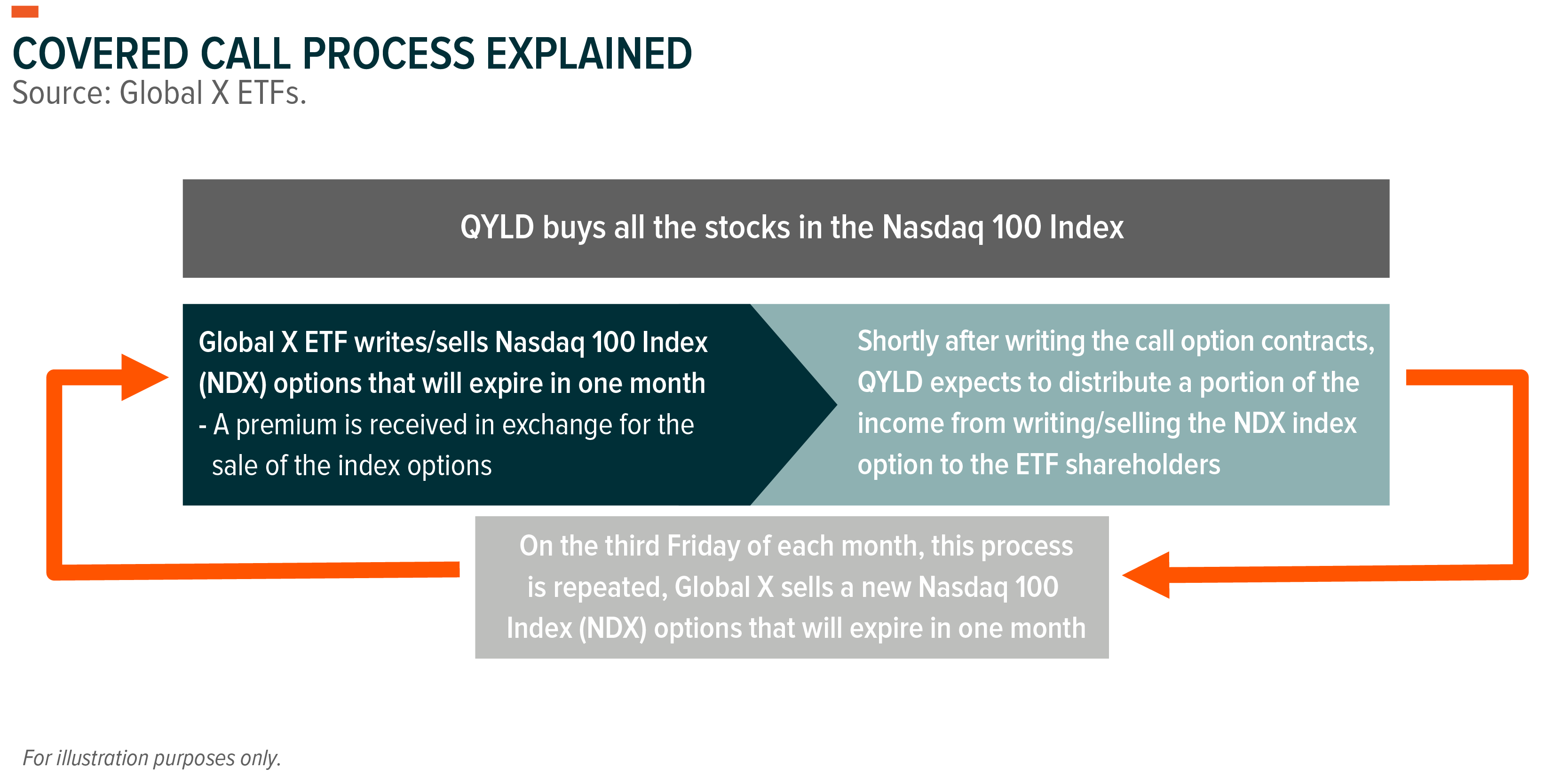The Case for a Systematic Options Rolling Plan
Options can be an effective tool for investors seeking to diversify their portfolios. They can provide a relatively low-cost opportunity to take an interest in an underlying security, and they can be flexible, allowing for adjustments in expiration, size, and strike when crafting a contract to augment their associated risk and return profile. Contributing to this flexibility is that investors can enter into and exit positions fairly seamlessly, provided adequate levels of open interest exist. However, managing a portfolio of options can be tedious and time consuming for a variety of reasons. Elevated market volatility can add to the complexity too. Investors can’t always execute a single strategy and ride it out until expiration without considering some sort of opportunity cost that exists. For this reason, it is important to understand the ins and outs of rolling options and how the ETF structure offered by Global X funds can streamline the process.
Key Takeaways
- Understanding an investor’s objectives is key in managing an effective options strategy for the long run. Inefficient strategy implementation can lead to negative consequences like performance chasing and higher than needed costs.
- Determining if and when it is the right time to roll an option position can prove challenging. However, similar in nature to the concept of dollar cost averaging, passive rules-based strategies can be quite effective for investors with longer time horizons.
- Harnessing the ETF wrapper may simplify the rolling decision. Indexes tracked by the Global X suite of options based ETFs employ systematic rolling methodologies that allow investors to pursue goals like growth, income generation, and risk mitigation.
The Benefits and Pitfalls of Rolling Options Contracts
When option investors enter into a contract, they become exposed to the movements of an underlying instrument until the date of expiration. However, with the proper rolling plan in place, they can trade out of that position before the option is exercised and purchase or write a new contract that provides a degree of downside protection, premium income, or both. Rolling out of an existing position might afford the investor the opportunity to lock in profits should an underlying instrument have risen in value. It could also allow them to react to changes in the market should the case for, say, a covered call or a cash-covered put write no longer be applicable.
This can be a time-consuming process, as investors weigh not only the residual value that exists in an existing contract, but also the opportunities that are available across the broader markets. For instance, the positive correlation that has been shared between option prices and implied volatility is well documented. This might make it tempting for investors to roll out of their positions when markets are experiencing widely oscillating asset prices. However, the frequent rolling of positions can often prove a costly endeavor, and allocating time toward investigating new positions can lead to a material opportunity cost. Below we highlight the deviation between the implied volatility of the S&P 500 Index (measured by the VIX) and the Cboe Realized Volatility Index (RVOL). The spread between the two measures displays how chasing income by writing contracts based on implied volatility can often fail to provide the anticipated result. For instance, should realized volatility turn out to be greater than implied volatility, the option writer, taking the short position, has likely sold a contract for less value than it is actually worth.

Passive Rolling Can Support Investment Goals While Mitigating Some Risks
When individuals and institutions take positions using option contracts, they typically have one of two main intentions in mind: to create downside protection or to improve the yield on an existing investment. Finding applicable premium values and strike prices are paramount to achieving these goals, or some combination thereof. However, once a contract is initiated, its value changes almost perpetually. This behavior makes it difficult to track important underlying statistics like remaining downside protection, maximum profit potential, or the annualized return given the recent price. Nonetheless, rolling option positions is important to be sure that these goals are being pursued efficiently.
Employing a passive options rolling strategy can help alleviate some of these concerns. Indeed, it can save time associated with tracking the aforementioned calculations. Passive option strategies may also contribute to risk reduction in that they can remove the timing and emotional factors that are associated with the decision process. In this respect, the method can be equated to dollar cost averaging, in that the investor, by perpetually writing call positions, can retain a certain degree of protection and premium income, although the amount of that income can vary. Importantly, relative to funds that operate with an actively managed option policy, passive option investment strategies tend to trade on lower volume, and this lends them to create fewer transaction-associated fees.
Global X’s Options ETFs Operate Using a Variety of Calculated Rolling Initiatives
The Global X suite of option products utilizes European-style options, which cannot be executed before their expiration date. This style of option ensures that the writer can roll out of their position before the reference asset is put upon them or called away. It affords them the opportunity to maintain a predetermined level of downside protection over the life of the options, based on premiums received or moneyness of a purchased put. It also creates a situation where the results provided by initiating the option contracts can be more predictable than those associated with American options, which can be exercised by the purchaser at any point over the life of the option.
For our standard covered call ETFs, including QYLD and XYLD, which track the Nasdaq 100 and S&P 500, respectively, this methodology provides us the opportunity to roll out of our positions the day before contracts expire. We can then write new calls for the month ahead, fetching higher levels of premiums than potentially otherwise.

For our products centered around tail risk and collar strategies like the Global X NASDAQ-100 Tail Risk ETF (QTR) and the Global X NASDAQ-100 Collar 95-110 ETF (QCLR), our rolling methodology positions us to purchase puts designed to mitigate sell-offs of greater than 10% and 5%, respectively, over the three-month life of the option. This feature allows these strategies to meet the needs of a variety of portfolios. Notably, in recent years, rising volume and growing levels of open interest present across the broader options markets have created an environment that is even more flexible for these instruments. For instance, in 2022, options contract volume on the ETFs themselves as measured by the Options Clearing Corporation increased 33.5% to 355.5 million contracts, which is a trend that we expect to continue.1 This represents a material difference from mutual funds, on which options writing is not permitted.
Conclusion: Rolling Strategies Support Efficient, Forward-Looking Portfolios
To implement options in a portfolio effectively requires investors to answer several key questions. A decision that looms large is how they plan to determine the right time to roll or close their position(s). Tending to this decision can present challenges, due in part to time, risk, and cost factors. In our view, this complexity reinforces the investment case for passive ETFs that use option strategies. In this volatile market landscape, the Global X suite of options ETFs offers investors several strategies that can help them diversify their portfolios with potential income generation and risk aversion.
Related ETFs
QYLD – Global X Nasdaq 100 Covered Call ETF
XYLD – Global X S&P 500 Covered Call ETF
QTR – Global X Nasdaq 100 Tail Risk ETF
QCLR – Global X Nasdaq 100 Collar 95-110 ETF
Click the fund name above to view current holdings. Holdings are subject to change. Current and future holdings are subject to risk.


